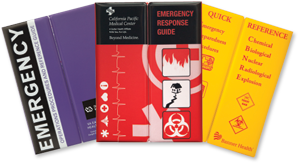Written by: Robin Hattersley-Gray
The numbers from this year’s Campus Safety Access Control and Lockdown Survey have been crunched, and the May 2022 Robb Elementary School mass shooting in Uvalde, Texas, appears to have prompted many K-12 schools to pay much closer attention to campus security.
However, the Uvalde tragedy appears to not have impacted institutions of higher education as much. Colleges are lagging way behind their K-12 peers in conducting site assessments to identify security vulnerabilities at their facilities.
When comparing K-12 with higher education and healthcare survey takers, this year’s school respondents were the most likely to conduct frequent assessments: 27% said they conduct monthly assessments, and 13% said they conduct quarterly assessments, for a total of 40%. Only 25% of institutions of higher education have conducted monthly or quarterly assessments. Twenty-seven percent said they don’t know how often their campuses conduct security assessments and 11% said their facilities never conduct these types of reviews. Put those two figures together, and that totals 38% of all college respondents.
Overall, more than one in five (22%) hospital, university, and K-12 respondents said they either don’t know (16%) or their campuses never (6%) conduct security site assessments.
CLICK HERE TO VIEW THE ACCESS CONTROL & LOCKDOWN SURVEY CHARTS.
When we asked survey participants when they last conducted security site assessments of their campuses, 80% of K-12 respondents and 78% of healthcare respondents said their facilities have done one within the year, while only 47% of institutions of higher education have done so. Additionally, 33% of K-12 school respondents said the last time their campus conducted a security site assessment was this month, compared to only 13% of college respondents.
Nearly a third of colleges said they don’t know the last time their campus conducted a security site assessment, compared to 10% of K-12 respondents and 13% of healthcare respondents.
Most Common Access Control Solutions Adopted: Locks and Photo IDs
One could argue that the lack of site assessments conducted by institutions of higher education could be due to the fact that these types of campuses, along with healthcare facilities, are further ahead of K-12 schools in implementing security technologies.
For example, our survey found that more than 83% of college and healthcare respondents said their facilities have mechanical locks, compared to only 77% of K-12 schools and districts. Colleges and hospitals are also more likely to have electronic locks, wireless locks, wired locks, proximity card systems, smart card systems, biometrics, access control software, and electronic parking gates.
That said, K-12 schools are much more likely to have perimeter fences and window safety and/or security film installed than colleges or hospitals. K-12 and healthcare respondents are much more likely than university respondents to have visitor management software (45% for K-12 and healthcare compared to only 11% for institutions of higher education). They are also much more likely to have secure entrance vestibules/mantraps.
Overall, mechanical locks, photo IDs, and electronic locks are the most common access control, lock, visitor management, and door hardware solutions on academic and healthcare campuses.
More K-12 Campuses Than Colleges Can Lock Classroom Doors from the Inside
In addition to asking about security site assessments, which were new questions in this year’s Access Control and Lockdown Survey, Campus Safety asked survey participants if their campus classroom and office doors can be locked from the inside.
When comparing how K-12 and college survey participants responded to the classroom question, the differences were again significant. Fifty-seven percent of K-12 respondents said more than 90% of their classroom doors can be locked from the inside. That’s 16 percentage points more than colleges — only 31% of higher ed respondents said 91-100% of their classroom doors can be locked from the inside.
However, 10% of K-12 and 9% of higher ed respondents said that none of their classroom doors can be locked from the inside.
CLICK HERE TO VIEW THE ACCESS CONTROL & LOCKDOWN SURVEY CHARTS.
For office doors, although 58% of all respondents said more than 80% of these doors can be locked from the inside, there is considerable variation when the responses are broken down by sector. Nearly two thirds (64%) of K-12 respondents said 81-100% of their office doors can be locked from the inside, compared to 53% of college survey takers, and only 44% from healthcare.
For campuses that can lock only 0-10% of their office doors from the inside, K-12 schools also lead the way at 18%, compared to 9% of colleges, and 7% of hospitals.
One thing to keep in mind: for the respondents who said their classroom and/or office doors can be locked from the inside, hopefully they aren’t using door-blocking/barricade devices. These types of devices, which generally aren’t code-compliant, are dangerous. (For further coverage of this controversy, see A Dangerous Trend: 15% of Campuses Have Bought Barricade Devices below.)
Only a small percentage of doors on campuses can be remotely locked by campus security or administrators.
There is significant variation among campus types as to the percentage of doors with working locks and hardware on them. At 84%, K-12 respondents were the most likely to say that more than 80% of the locks and hardware on their doors are working properly. Nearly three in four (74%) said 91-100% have properly working locks and door hardware.
Comparing those results with the statistics from colleges and hospitals, only 70% of higher ed respondents said 81-100% of their door locks and hardware are properly working. The percentage of healthcare respondents who said more than 80% of their door hardware and locks are working properly is only 66%.
A Dangerous Trend: 15% of Campuses Have Bought Barricade Devices
A question on door-blocking devices was also added to this year’s survey. Unfortunately, a small but disturbing percentage (15%) of respondents said they have purchased door-blocking/barricade devices. When broken down by sector, those percentages are:
- K-12: 18%
- Hospital: 17%
- Higher Ed: 10%
Door-blocking/barricade devices generally don’t comply with fire codes or the Americans with Disabilities Act (ADA). Even in the jurisdictions that do allow this type of equipment, campus protection professionals need to remember that there is a whole host of other reasons why these devices are dangerous. Campus Safety has covered this controversy in depth previously. Click here and here for the many, many reasons why campuses should not be using this type of equipment.
Schools, hospitals, and colleges that buy and deploy door-blocking/barricade devices are setting themselves up for a tragedy that is foreseeable and avoidable.
Campus Security Pros Moderately Confident in Their Ability to Prevent, Mitigate Incidents
Keeping in mind that the intent of campuses installing access control and lockdown solutions is to prevent and mitigate gun violence, domestic terrorism, and other types of crime, Campus Safety asked how confident respondents are in their organization’s ability to prevent and/or mitigate unauthorized intrusion, active shooter attacks, and active bomber attacks.
Respondents’ levels of confidence varied significantly. K-12 and healthcare respondents said they are much more confident than college survey participants in their organization’s ability to prevent unauthorized intrusion. School and hospital average confidence levels are 3.77 and 3.49 (on a scale from 1 to 5 with 1 being “not confident at all” and 5 being “very confident), respectively, compared to only 2.68 for higher ed.
For the most part, K-12 survey takers are somewhat more confident than their college and hospital peers in their organization’s ability to prevent active shooter attacks (3.38 vs. 2.62 and 2.53, respectively), and mitigate active bombings (3.14 vs. 2.77 and 2.50, respectively).
The only situation where all three types of campuses have somewhat similar confidence levels is active shooter mitigation: K-12’s average confidence level is 3.62, higher ed’s is 3.34, and healthcare’s is 3.17.
All three types of survey participants have the least confidence in their organization’s ability to prevent active bomber attacks: K-12’s average confidence level is 3.02, higher ed’s is 2.77, and healthcare’s is 2.50.
CLICK HERE TO VIEW THE ACCESS CONTROL & LOCKDOWN SURVEY CHARTS.
Campus Safety thanks the nearly 350 school, university, and healthcare security professionals who participated in our survey. We truly appreciate you input!
Sponsored by:
This appeared on Campus Safety News and is shared with consent: https://www.campussafetymagazine.com/news/2022-campus-safety-access-control-lockdown-survey-results/







